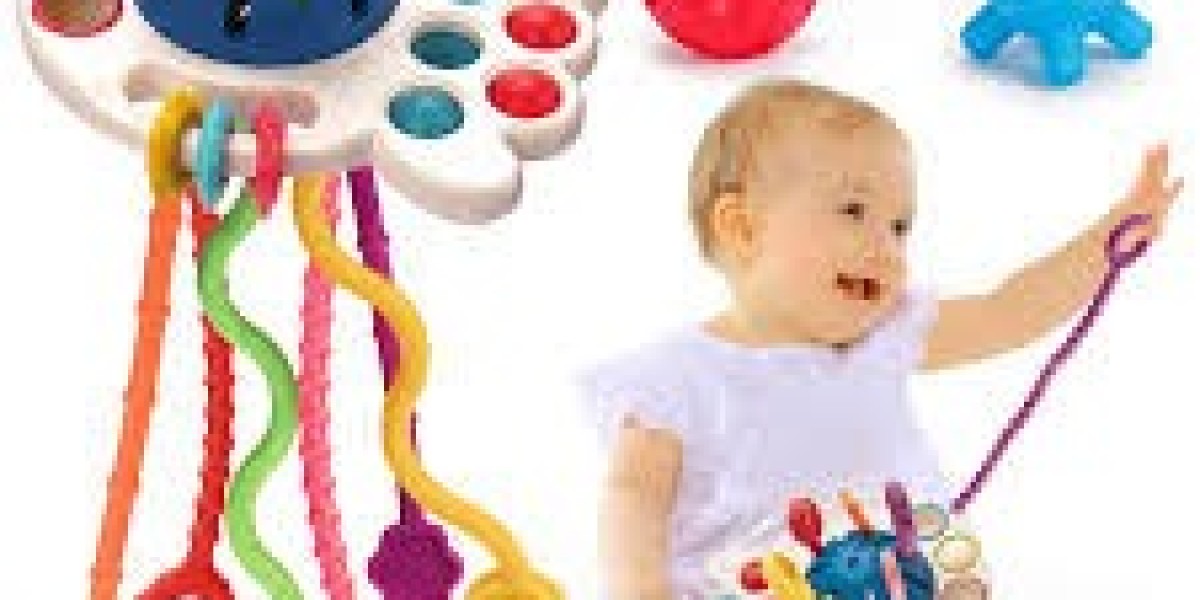Pull string toys are a category of toys that have been around for centuries, delighting children and adults alike with their simple yet captivating mechanism. From vintage wooden pull toys to modern plastic models, these toys continue to evolve, maintaining their timeless appeal. This article explores the charm of pull string toys, focusing on their history, design, types, and the reasons they remain a beloved part of childhood play.
What Are Pull String Toys?
Pull string toys, as the name suggests, are toys designed to be activated or made to move by pulling a string. These toys typically feature a string or cord attached to them, and when the string is pulled, it sets the toy into motion. The action may cause the toy to move across the floor, make sounds, or even perform tricks. These toys come in various shapes and sizes, from simple animals to complex designs, all centered around the basic concept of interaction through pulling a string.
Pull string toys offer an engaging way for children to develop motor skills, hand-eye coordination, and an understanding of cause-and-effect relationships. The simplicity of these toys contrasts with their ability to spark creativity, as children can come up with games, races, or adventures involving their favorite pull string toys.
A Historical Overview of Pull String Toys
The history of pull string toys dates back centuries, with early versions crafted from wood and designed to mimic animals, vehicles, or other figures that could be drawn or moved along by a string. In the 19th century, these toys were often handmade and were a significant part of childhood play in rural and urban households.
The concept of pull toys grew alongside industrialization and mass production. During the early 20th century, companies like Fisher-Price and others began producing mass-produced pull string toys made of durable materials, often with added features like wheels, sounds, or moving parts. These toys were not only affordable but also built to last, making them popular gifts for children.
The Mechanics Behind Pull String Toys
At the core of pull string toys lies a simple mechanical system that relies on a cord or string to create motion. The mechanism works by engaging a gear or pulley system that, when the string is pulled, causes movement in the toy. Some pull toys are designed with additional features like rotating parts, flapping wings, or even wind-up motors that enhance the play experience.
One of the most basic pull string toys is the classic wooden pull toy, often featuring an animal such as a duck or dog. These toys usually have a string attached to them, and when the string is pulled, the toy moves forward, often with the wheels turning or the head bobbing up and down.
Modern versions of pull string toys often incorporate electronic elements, such as sound effects, lights, or even voice-activated commands. For example, some pull string toys for toddlers might make animal noises or play music when activated by pulling the string.
Types of Pull String Toys
Pull string toys come in a variety of forms, each offering its own unique experience. Some of the most popular types include:
1. Classic Wooden Pull Toys
These toys are typically crafted from wood and feature wheels or movable parts that activate when the string is pulled. They often come in the shape of animals like ducks, dogs, or elephants. Their simplicity makes them a great first toy for babies and toddlers, helping develop motor skills and coordination.
2. Pull String Vehicles
In addition to animal shapes, pull string toys can also take the form of vehicles like cars, trucks, and trains. These toys often have a string attached to the front, allowing children to pull them along the ground. Some versions may also make sounds or have lights that flash when activated.
3. Pull String Dolls and Figures
Pull string dolls and figures are often associated with interactive play. These toys may come with movable limbs or heads, and pulling the string may trigger certain actions, such as waving, dancing, or speaking. This type of toy is popular for encouraging imaginative play in children, as they can create their own stories and adventures.
4. Musical Pull Toys
Some pull string toys are designed to produce sounds or music when the string is pulled. These toys often have an embedded wind-up mechanism that plays a melody, a song, or animal sounds. Musical pull toys can be particularly soothing for babies and young children, offering both auditory stimulation and sensory development.
5. Interactive Pull Toys
With the advent of technology, many pull string toys now incorporate electronic elements. These toys might include lights, sounds, or even voice interactions, allowing for a more engaging and interactive play experience. For example, a pull string toy might say a phrase when the string is pulled or emit sound effects that correspond to the toy’s movement.
The Appeal of Pull String Toys
While the technology in children’s toys has become more advanced, pull string toys remain popular due to several key factors:
Simplicity and Engagement:
Pull string toys are simple yet engaging, offering a direct and straightforward form of play that doesn't rely on screens or complex controls. This simplicity allows for open-ended play, where children can imagine countless scenarios and interactions for their toys.Developmental Benefits:
Pull string toys are beneficial for the development of fine and gross motor skills. For young children, these toys help improve hand-eye coordination, balance, and strength as they pull the string and observe the movements of the toy. The process of pulling a string also helps children practice their grasp and release skills.Encouraging Physical Activity:
Unlike digital toys, pull string toys encourage children to move around. They may be prompted to chase after their toy, pick it up, or engage in activities like tug-of-war, all of which promote physical activity.Nostalgia and Collectibility:
For many adults, pull string toys evoke nostalgia. They may remind people of their own childhood or evoke memories of simpler times when toys had a more hands-on, tangible quality. As a result, vintage pull string toys have become collectible items, sought after by toy enthusiasts, collectors, and even historians.
Pull String Toys in the Modern Era
While pull string toys have maintained their charm, they have evolved over time. Modern versions come in an array of designs and materials, with plastic and other durable materials replacing the traditional wood in many cases. Some newer pull string toys also feature battery-powered components, which allow for more complex movements and effects, such as spinning, flipping, or singing.
Nevertheless, the basic charm of the pull string mechanism remains, and many manufacturers continue to produce these toys for the enjoyment of children worldwide. Whether in the form of classic wooden animals, modern vehicles, or interactive dolls, pull string toys are still cherished for their ability to bring joy through simple, tangible play.
Conclusion
Pull string toys are a classic toy category that combines simplicity, interactivity, and educational benefits. With their deep historical roots and continued relevance in today’s toy market, they serve as a bridge between the past and the present. Whether you're pulling a string to make a wooden duck waddle across the floor or activating a voice-activated figure, pull string toys bring an element of wonder and fun to the play experience.
For parents, caregivers, and collectors, these toys offer a charming reminder of the importance of hands-on play in childhood development. With their unique blend of nostalgia, functionality, and engaging design, pull string toys are sure to remain a beloved part of childhood for years to come.









